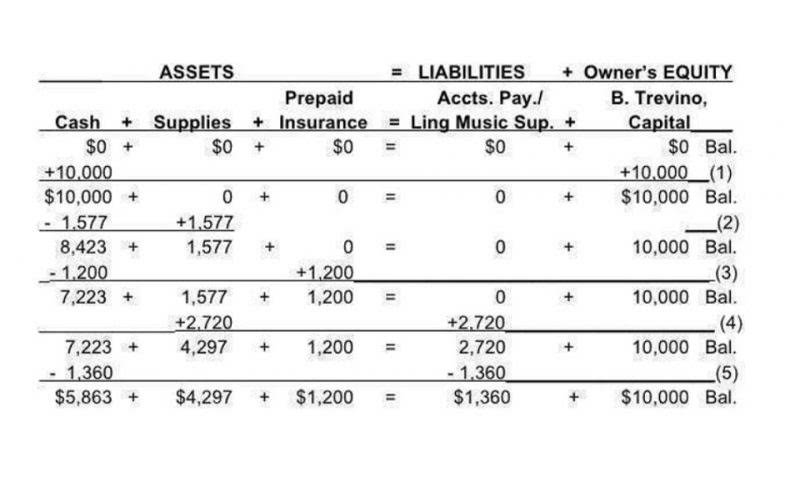
While costs are being accumulated in the construction work in progress account, do not commence depreciating the asset, because it has not yet been placed in service. Once the asset is placed in service and shifted to its final fixed asset account, begin depreciating it. Thus, construction work in progress is one of only two fixed asset accounts that are not depreciated – the other one being the land account. Once a construction project is complete and the asset is ready for its https://grupa-inkaso.pl/can-a-company-pay-a-dividend-if-it-has-negative/ intended use, the accumulated costs in the CIP account are moved. This reclassification transfers the total capitalized amount out of the temporary CIP account.
Step 2: Monitor Costs Throughout the Project

Direct labor costs, representing the wages and benefits paid to workers directly involved in the construction, are also capitalized. Additionally, allocable overhead costs are included, encompassing expenses like indirect labor, utility costs for the construction site, and depreciation of construction equipment used on the project. Furthermore, design and engineering fees, permits, and other regulatory costs directly tied to the project’s development are added to the CIP balance.
What Is Construction in Progress in Accounting?
For qualifying assets, interest costs incurred on borrowings specifically for the construction period can also be capitalized. All these costs are aggregated in the CIP account until the asset is complete and ready for its intended operational use. The presence of Construction-in-Progress (CIP) on financial statements can significantly influence a company’s financial health and performance metrics. CIP is recorded as an asset on the balance sheet, reflecting the investment in ongoing projects. This capitalization of costs can lead to a substantial increase in total assets, which in turn affects key financial ratios such as the return on assets (ROA) and the debt-to-equity ratio.

Step 2. Identify projects and funding options
Depreciation is the systematic allocation of the asset’s cost over the periods in which it is expected to generate revenue. This transition from CIP to a depreciable asset shifts the asset from a non-depreciating, accumulating account to an operational asset that will impact the income statement through depreciation expense. As such, it’s best for teams to establish a clear handoff process between the project manager and the accounting team. When the project hits substantial completion, accounting should receive a formal notice that includes the date and details of any additional expenses to get the project to a final completion. Throughout the construction process while you’re tracking all expenses, you’ll need to evaluate which expenses need to be capitalized. Fixed assets, which are also called property, plant and equipment, go through a few stages in their life at any enterprise.
- The first step in construction in progress accounting is to record all expenses related to the construction project.
- When the asset is completed, you will debit the appropriate PP&E account and credit the total amount held in CIP that relates to that specific asset.
- For more guidance on construction accounting or professional support with your CIP accounts, contact PVM Accounting today!
- If the business is building assets under contract to sell, they are inventory assets.
- The thing they have in common is that they are deemed to be ‘not in use’ until the project, or a least a portion of the project, is no longer incomplete.
Step 4: Transfer CIP to Fixed Asset Accounts
As stated before, most capital budgeting initiatives are highly visible to the public. An initiative to improve a local park would naturally attract the attention of the citizens of the affected community. Since citizens have a vested interest in knowing how their tax money is being handled, the ability to report on how community projects are funded is a crucial part to any kind of capital planning. This can be confusing to elected officials and citizens when assessing infrastructure investments’ overall impacts. Accordingly, governments should prepare an annual capital budget document, or use web-based transparency visualizations to share the entity’s capital projects. The capital improvement budget—also called the capital budget—contains the funds allocated for all capital projects in a given fiscal year.
The thing they have in common is that they are deemed Accounts Receivable Outsourcing to be ‘not in use’ until the project, or a least a portion of the project, is no longer incomplete. Costs should stop being capitalized when the asset is substantially complete and ready for its intended use. Tracking costs during construction helps businesses stay within budget and adjust as needed. The all-in-one construction software that goes beyond basic accounting to put you in total command of your projects.

Construction in Progress Accounting: A Practical Guide
However, unlike other fixed assets, CIP does not undergo depreciation until the construction is complete, and the asset is put into use. Once the construction is complete, it’s time to move those costs from CIP to fixed asset accounts. Without proper CIP accounting, businesses may struggle with inaccurate cost tracking, inefficient resource allocation, and potential compliance issues during audits. Moreover, auditors often scrutinize construction-work-in-progress accounts due to their susceptibility to manipulation. Companies might be tempted to delay transferring costs from these recording transactions accounts to other asset categories, thereby artificially inflating profits. This practice, however, distorts financial reports by misrepresenting the true profitability of the company.
- Construction-work-in-progress accounts can be challenging to manage without proper training and experience.
- They bring in a lot of external costs like labor and materials, all managed and tracked through contracts, change orders, and invoices.
- Otherwise, maintenance expenditures should be included in the operating budget.
- The decision is typically based on the stage of completion of the project and the nature of the costs involved.
- Adherence to accounting standards while maintaining transparent CIP practices builds stakeholder trust.
- Keeping completed projects in CIP accounts can misrepresent your financial position.
Methods for Tracking CIP Costs
Let’s meet the crew and see how they impact the accuracy of your CIP accounting. However, as the company expands, recruits more employees, and works simultaneously on multiple projects, cip meaning in accounting tracking transactions on a spreadsheet gets difficult and time-consuming. With construction companies quickly evolving, there are more categories and accounts to consider, creating unique challenges for this industry. Among them, learning how to record construction in progress accounting stands out.
Construction in Progress (CIP) Accounting

By capitalizing these costs, companies can more accurately calculate and support their tax deductions, ensuring compliance with applicable tax laws. Accurate construction-in-progress accounting is essential for project transparency, compliance, and financial stability. By effectively tracking costs and transferring assets upon project completion, businesses can make informed decisions, meet regulatory standards, and justify investments to stakeholders. CIP accounting is a critical aspect of financial management for construction and asset-intensive businesses.